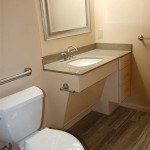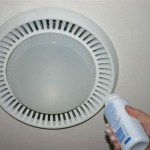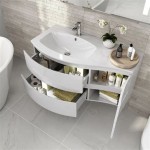Bathroom Vanity Double Sink Wooden: A Comprehensive Guide
The bathroom vanity is a crucial element in any bathroom design, providing both functional storage and aesthetic appeal. A double sink wooden bathroom vanity offers an enhanced level of functionality, particularly beneficial for families or individuals sharing a bathroom space. The combination of a double sink configuration with the natural warmth and beauty of wood creates a sophisticated and practical focal point.
This article will delve into the various aspects of bathroom vanity double sink wooden units, exploring design considerations, wood types, hardware options, installation nuances, maintenance requirements, and relevant cost factors. Understanding these details is essential for making an informed decision when selecting a double sink wooden vanity for a bathroom renovation or new construction project.
The popularity of double sink vanities stems from their ability to alleviate the morning rush. Multiple users can simultaneously access a sink, reducing congestion and improving efficiency. Furthermore, the increased counter space associated with a double sink vanity provides ample room for toiletries, grooming products, and other bathroom necessities. The addition of wood as a primary material adds warmth, texture, and a touch of elegance to the overall bathroom aesthetic, distinguishing it from more sterile or clinical designs.
Key Point 1: Design Considerations for Double Sink Wooden Vanities
The design of a double sink wooden vanity significantly impacts both its functionality and visual impact. Careful consideration must be given to several factors to ensure the selected vanity aligns with the overall bathroom design and its intended use.
Firstly, the size of the bathroom is paramount. A double sink vanity, by its nature, requires more space than a single sink option. The vanity must fit comfortably within the available footprint, allowing for adequate clearance around the sink and sufficient walking space. Overcrowding can make the bathroom feel cramped and uncomfortable. Precise measurements of the bathroom are crucial before beginning the selection process.
Secondly, the style of the vanity should complement the existing bathroom décor. Wooden vanities are available in a wide range of styles, from traditional and rustic to modern and minimalist. A traditional bathroom might benefit from a vanity crafted from richly stained wood with ornate details, while a modern bathroom might be better suited to a sleek, light-colored vanity with clean lines. Considering the existing tile, fixtures, and paint colors is essential for achieving a cohesive and harmonious design.
Thirdly, storage requirements should be carefully evaluated. The primary function of a vanity is to provide storage for bathroom essentials. Double sink vanities typically offer more storage space than single sink options, but the configuration of that storage should be considered. Drawers are ideal for organizing smaller items, while cabinets are better suited for storing larger toiletries and cleaning supplies. The number and type of storage compartments should be tailored to the specific needs of the users.
Fourthly, the type of sink must be chosen. Undermount sinks offer a seamless and easy-to-clean surface, as they are mounted beneath the countertop. Vessel sinks, which sit on top of the countertop, can add a unique design element but may require more cleaning around the base. Integrated sinks, where the sink and countertop are molded as one piece, offer a modern and streamlined look. The sink style should be chosen based on both aesthetic preferences and practical considerations.
Finally, the height of the vanity should be ergonomic. Standard vanity heights typically range from 30 to 36 inches. Taller individuals may benefit from a vanity that is slightly higher, while shorter individuals may prefer a lower vanity height. Considering the height of the primary users is essential for ensuring comfort and ease of use.
Key Point 2: Wood Types and Hardware Options
The type of wood used in a double sink vanity significantly influences its durability, appearance, and cost. Similarly, the hardware choices, such as knobs and pulls, can greatly enhance the overall aesthetic.
Several wood types are commonly used in bathroom vanities. Solid wood, such as oak, maple, cherry, and walnut, is a durable and aesthetically pleasing option. Solid wood vanities are typically more expensive but offer superior longevity and a natural beauty that is unmatched by other materials. However, solid wood is susceptible to moisture damage and may require special care and maintenance.
Plywood, particularly marine-grade plywood, is a more moisture-resistant alternative to solid wood. Plywood vanities are typically less expensive than solid wood options and offer good stability and strength. However, the edges of plywood may require finishing to prevent moisture damage and to improve the overall appearance.
Medium-density fiberboard (MDF) is another common material used in bathroom vanities. MDF is a composite material made from wood fibers and resin. It is less expensive than solid wood and plywood and is resistant to warping and cracking. However, MDF is more susceptible to water damage and should be properly sealed to prevent swelling and deterioration.
The choice of hardware can significantly impact the overall look of the vanity. Knobs and pulls are available in a wide range of materials, styles, and finishes. Chrome and brushed nickel are popular choices for modern bathrooms, while oil-rubbed bronze and antique brass are often used in traditional settings. The hardware should complement the style of the vanity and the other fixtures in the bathroom.
Hinges and drawer slides are also important hardware components. High-quality hinges and drawer slides will ensure smooth and reliable operation of the vanity doors and drawers. Soft-close hinges and drawer slides are a popular upgrade that prevents slamming and extends the lifespan of the vanity.
Key Point 3: Installation, Maintenance, and Cost Considerations
Proper installation is crucial for ensuring the longevity and functionality of a double sink wooden vanity. Regular maintenance is also essential for preserving its beauty and preventing damage. Furthermore, understanding the cost factors associated with double sink wooden vanities is necessary for budgeting purposes.
Installation of a double sink wooden vanity typically requires plumbing and carpentry skills. It is generally recommended to hire a professional plumber and carpenter to ensure the vanity is properly installed and connected to the plumbing system. Incorrect installation can lead to leaks, water damage, and other costly problems.
The installation process typically involves removing the old vanity, preparing the plumbing connections, installing the new vanity, connecting the sinks and faucets, and sealing the countertop. It is important to follow the manufacturer's instructions carefully during the installation process.
Maintenance of a double sink wooden vanity involves regular cleaning and periodic refinishing. The vanity should be cleaned regularly with a mild soap and water solution to remove dirt and grime. Harsh chemicals and abrasive cleaners should be avoided, as they can damage the wood finish.
Spills should be cleaned up immediately to prevent staining and water damage. The vanity should be properly ventilated to prevent moisture buildup. Periodically, the vanity may need to be refinished to restore its original luster. This typically involves sanding the surface, applying a new stain or paint, and sealing the finish.
The cost of a double sink wooden vanity can vary widely depending on the size, style, wood type, hardware, and installation costs. Basic double sink wooden vanities can range from several hundred dollars to several thousand dollars. Custom-made vanities are typically more expensive than pre-fabricated options.
Installation costs can also vary depending on the complexity of the project and the local labor rates. It is important to obtain quotes from multiple contractors before hiring someone to install the vanity. In addition to the cost of the vanity and installation, there may also be additional expenses such as plumbing supplies, electrical work, and countertop materials.
Finally, a double sink wooden bathroom vanity represents a significant investment in the functionality and aesthetics of a bathroom space. Selecting the right design, wood type, and implementing a proper installation and maintenance routine ensures long-term enjoyment and value.

60 Solid Wood Double Sink Vanity Modern Console

Hargrove Double Bathroom Vanity 60 72 West Elm

Chester 60 Inch Double Sink Natural Wood Vanity

Reed 60 Double Sink Vanity Pottery Barn

60 Brookfield Double Bathroom Vanity Country Oak Vanities Depot

60 Modern Wood Vanity Double Sink What We Make

Hargrove Double Bathroom Vanity 60 72 West Elm

Home Decorators Collection 60 In W X 22 D 34 5 H Double Sink Freestanding Bath Vanity Reclaimed Wood With Grey Engineered Stone Top Tj 0236v6022be The Depot

60 Solid Wood Double Sink Vanity Modern Console

Roswell León 60 In W X 22 D 34 H Double Sink Bath Vanity Fir Wood Brown With White Composite Stone Top 803860m Fn Lwn The Home Depot
Related Posts







